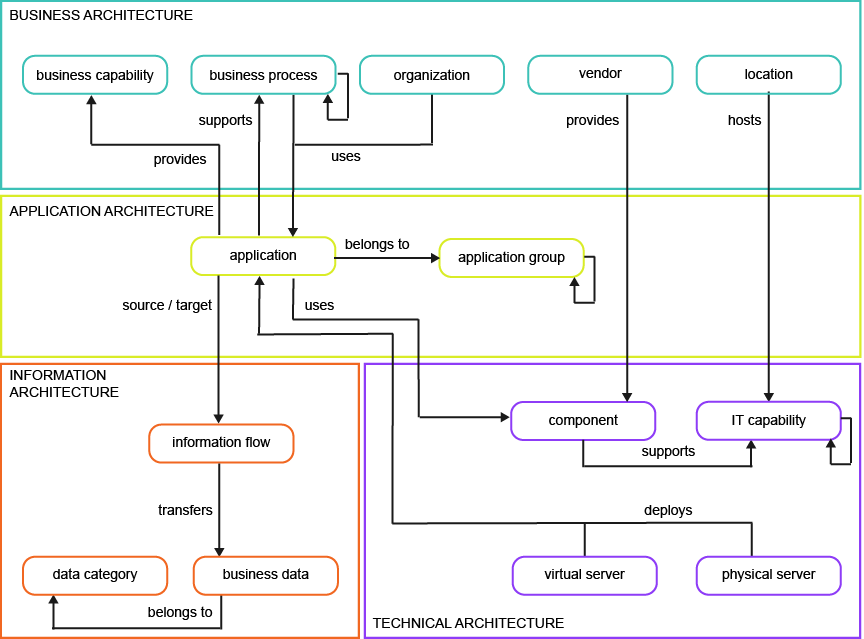Capture your IT architecture
Alfabet helps you manage your IT architecture so that you can oversee the application architecture, contain costs, and ensure that the IT support to the business is consistent and reliable. Alfabet supports you to capture the applications in your IT landscape and document which parts of the business are reliant on which applications. Application lifecycle management ensures that your roadmap takes into account which applications will support your business capabilities at a specific moment in time. With a single source of truth about the application landscape, your company can rest assured that the complexity of the IT is understood when planning, rationalizing, and transforming the IT portfolio. The health of your application landscape will have a direct impact on the success of the business capabilities they support.

The application portfolio is at the core of your company's IT landscape and running applications usually constitutes the largest part of IT spending. The business architecture includes the company's core business capabilities as well as the business processes that are carried out by organizations. The applications in the application portfolio support the business capabilities to help the company accomplish its mission. The application operates on a technology platform made up of hardware and software components that provide the technologies that enable the application. Vendors supply the components and physical servers are housed at the company's locations. Data is transferred between applications by means of information flows.
The completeness of your data is critical to maximizing the benefits of Alfabet. This includes the assets in your business, application, information, and technology architectures as well as the projects that are relevant to the IT portfolio. Typically, some data will be imported to the repository by your portfolio administrator. However, data stewards or portfolio managers may also add or update existing data to the repository. All of the data about your company's assets does not have to be in the repository to start working with Alfabet. You can begin to capture data for the immediate task at hand and add more information later as needed.
In addition to capturing and updating data, you can regularly assess the quality of the data in your repository and initiating activities to ensure that the data is kept up-to-date. This is easy to do because data quality scores and data completeness are measured along all stages of IT portfolio management so that you always know how reliable your data is and where information gaps need to be addressed. Data quality assessments are available for each individual asset in the repository as well as for the data source used to examine a business question.
 |
Document the business architecture. This includes documenting you business capabilities, organizations, vendors, and locations. Your business process model can be documented directly in Alfabet or imported by an administrative user via an integration with Horizzon. |
 |
Document the application architecture. Ensure that the lifecycle of each application is documented. Specify the business capabilities that each application provides. Assign applications to application groups so that you can analyze various aspects of your application portfolio. |
 |
Document the information architecture. Specify the information flows between applications and document the business objects that are transferred by the information flows. Assign business objects to business object categories. |
 |
Document the technology architecture. Capture the IT capabilities in your IT architecture. Define the components and the applications they support. Catalog the vendors to understand which vendors supply which components. Document which servers deploy applications and the locations of the physical servers. |
 |
Capture your project portfolio. Document the projects targeting change in the IT landscape and specify which assets are impacted by the projects. Bundle projects in project groups to enable portfolio impact analyses. |